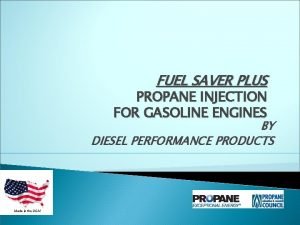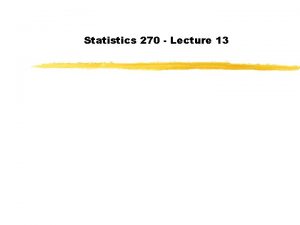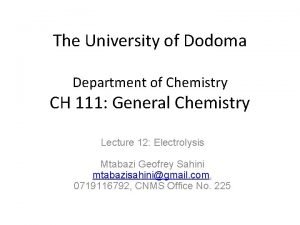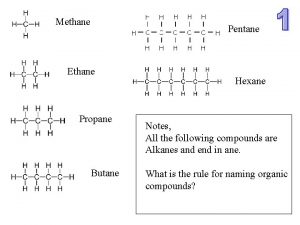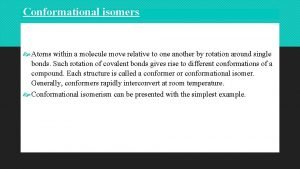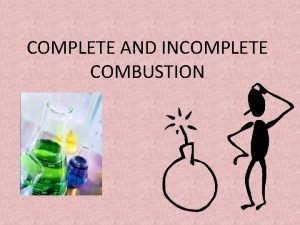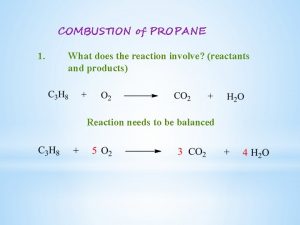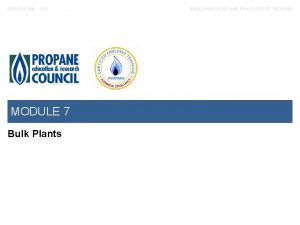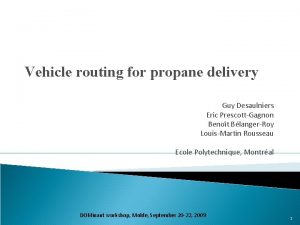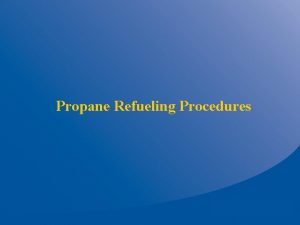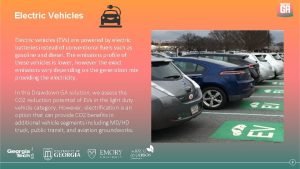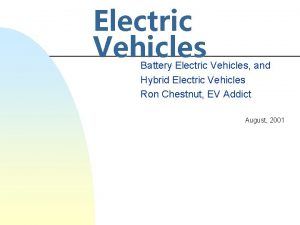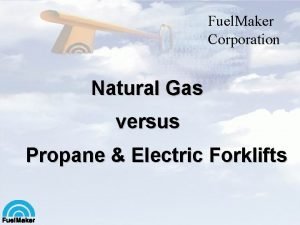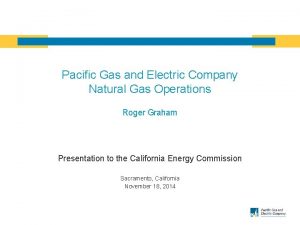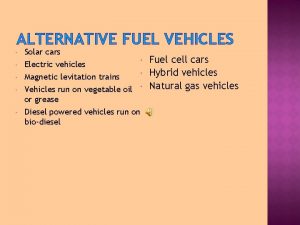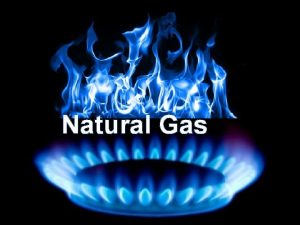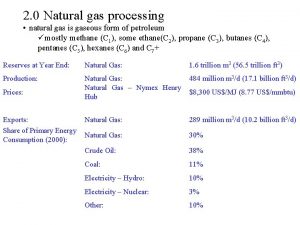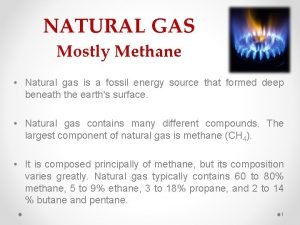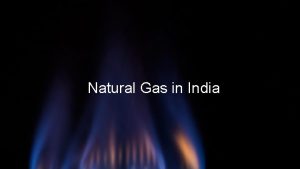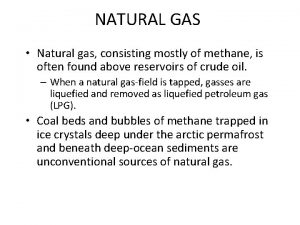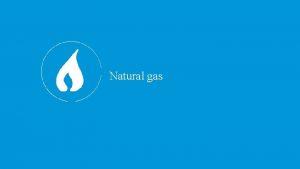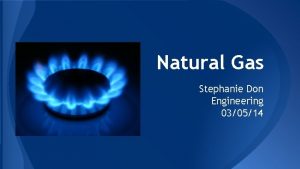Propane Powered Vehicles Natural Gas Powered Vehicles Electric




















- Slides: 20


Propane Powered Vehicles Natural Gas Powered Vehicles Electric Powered Vehicles Hybrid Powered Vehicles

Power plant Manufacturing Pumps Fueling Station

Vs. 1996 GEO Metro 2012 Toyota Prius 41 -49 MPG ($8000 MSRP) 48 -51 MPG ($39, 525 MSRP)

Vs. 1988 Ford 150 16 -20 MPG ($9676 MSRP) 2012 Ford 150 15 -17 MPG ($23, 300 - 52, 230 MSRP)



Honda CVCC Engine Created in 1974, Honda developed the CVCC (Compound Vortex Controlled Combustion) Engine which allowed their cars to meet EPA Emissions Standards without a Catalytic Converter. With the CVCC, Honda exceeded emission standards through an alternative path by delivering a rich mixture to a pre-chamber surrounding the spark plug. This pre-combustion helped ignite an extremely lean mixture in the main combustion chamber. Regulated emissions were virtually eliminated.


Urban Environmental Justice Zones

Diesel Particulate Filters (DPFs) Tailpipe Retrofits A device designed to remove diesel particulate matter or soot from the exhaust gas of a diesel engine. • Cordierite Wall Flow Filters • Silicon Carbide Wall Flow Filters • Ceramic Fiber Filters • Metal Fiber Flow Through Filters • Paper Filters Prices Range: $4000 - $7500

Closed Crankcase Ventilation Systems (CCVs) Channels gases back into the combustion chamber in an attempt to reignite the unburned fuel that had previously escaped. Prices Range: $1200 - $2000

Steps to Bridge the Gap Identify and address the source of the problem; the unburned fuel EPA findings define “emissions” as unburned fuel Find a way to utilize the unburned fuel as a positive influence EPA findings explain that 82% of fuel is not translated to kinetic energy Embrace local technologies suited for the needs of each particular region Create the pre-existing conditions necessary for new technology to be more adaptable to both OEM and aftermarket transportation modes (Testing Standards, Perspective of new technology, Getting regulation out of the way of innovation) Take the ROI and put that into savings for long term purchase plans

Regulatory Considerations. Federal Regulations for OBD II codes set car manufacturing “lean” settings at 245 miles per hour California has driven away 440, 000 businesses due to regulations The City of San Bernardino has filed bankruptcy California school budgets cut upwards of 50% LA Unified School District laying off 9000 drivers EPA has no category for a “cold catalyst” that begins effectiveness below 450 degrees fahrenheight One major manufacturer in the US builds a 78 mpg vehicle, but Federal regulations prohibit it’s sale in the US Chinese manufacturers escaping rising costs in China

What does this do for us as a Society Economically and Environmentally? Less wasted fuel and energy Reduces harmful emissions while never compromising the performance needs of a fleet in order to be profitable When local technology is embraced, local investment and growth equates to local jobs From the here and now solutions, the savings could be reinvested into infrastructures for long term planning and solutions Allows for the market to decide the winners and losers in the environmental technology sector Allows for those who once could not afford to participate, to choose the best available options that meet their budgets

Where has this “Theory” actually been put into practice? The New York City Taxi & Limo Commission gave permission to vehicles under their rule making to be retrofitted with a local technology as a bridge. This allowance also made way for two pieces of rule making to address regulations that were economically damaging the taxi and limo industry in New York City. The result allowed smaller fleets the chance to catch up to the regulations that were implementing lower emissions initiatives.

Money and Jobs are simple math. How does the math work? 300, 000 gasoline cars on US roads - Average life span 79 years 10, 000 million diesel trucks on US roads 25% of them are government fleet and public sector vehicles 25% of them are private business fleet, construction, transportation industry vehicles A study performed by Bill Clinton’s Global Initiative stated that for every $1 billion dollars in sales of product and services in the Green Energy and Innovative Tech sector, the ripple effect would be the creation of 7000 new direct and indirect jobs Our Firm, SMART Air Fuel Saver of CA Inc. , performed a financial modeling showing that an affordable emissions product, available to the masses, capturing only 1% of the US market place, would create $1 billion dollars in sales. Just 3 million vehicles having a type of

Money and Jobs are simple math. How does the math work? 300, 000 cars X 1% of market = 3, 000, 000 cars X $500 per “Local Technology” = $1, 500, 000, 000. 00 = 10, 500 direct and indirect jobs 10 years X 3, 000 cars = 30, 000 cars (10% of market) 1% of cars on the road = $1, 500, 000. 00 or 10, 500 jobs 10% of cars on the road = $15, 000, 000. 00 or 105, 000 jobs 50% of cars on the road = $75, 000, 000. 00 or 525, 000 jobs 50% of cars on the road are government and commercial fleet vehicles

Where has this happened before? Only 3 companies supply all 22 major manufacturers with catalytic converters. 1 major car manufacturer can build upwards of 3, 000 cars per year 10 major manufacturers X 3, 000 car per year = 30, 000 cars per year $300 per catalytic converter X 30, 000 cars per year = $9, 000, 000. 00 300, 000 cars X $300 per catalytic converter = $90, 000, 000. 00 = 630, 000 jobs Catalytic converters - 20 years for market entry Intermittent wipers - 10 years for market entry Global Positioning Systems (GPS) - Over 50 years. Originally for military

www. smartafs-ca. com
 Fuel saver plus
Fuel saver plus The weekly demand for propane gas
The weekly demand for propane gas Energy electric field
Energy electric field Joules per coloumb
Joules per coloumb Potential energy of an electric field
Potential energy of an electric field Electric potential from electric field
Electric potential from electric field A suitable electric pump in an electric circuit is a
A suitable electric pump in an electric circuit is a Chapter 21 electric charge and electric field
Chapter 21 electric charge and electric field Chapter 21 electric charge and electric field
Chapter 21 electric charge and electric field Units of charge
Units of charge Chapter 21 electric charge and electric field
Chapter 21 electric charge and electric field Electric charges and electric forces lesson outline
Electric charges and electric forces lesson outline Electrolysis of nacl
Electrolysis of nacl Mass percent formula
Mass percent formula Methane ethane
Methane ethane Hexane pentane
Hexane pentane Conformations
Conformations Incomplete combustion of carbon
Incomplete combustion of carbon What bonds are broken in the combustion of propane
What bonds are broken in the combustion of propane Propane module 7 answer key
Propane module 7 answer key Routing software for propane
Routing software for propane
